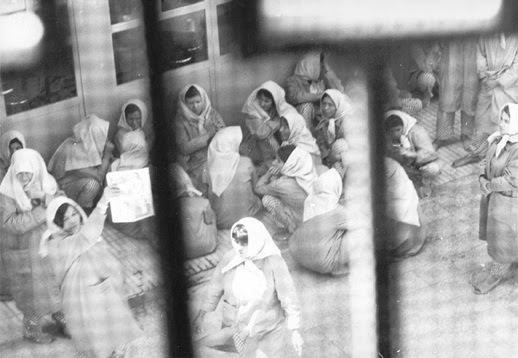The artist, Hadi Hazavei, discusses
freedom, growing up with cows and responsibilities that limit art
 |
| Hadi Hazavei’s brick structure: crude organisms and formal abstractions. Courtesy Shirin Gallery. |
by Tara Aghdashloo,
Tehran Bureau,
Guardian
An exhibition of 49 works by Hadi Hazavei at New York City’s Shirin
Gallery shows the artist’s material range and conceptual progression. An
array of colours, lines, and layers come together in his older series,
while his fingertips and palms have left their imprints amid the chaotic
aesthetics of his more recent pieces. One wall is filled with
minimalist geometric sketches reminiscent of glassworks from his Iranian
homeland.
Hazavei’s oeuvre revolves around the duality of
crude organisms and formal abstractions. This interplay is evident more
confidently than ever in his new brick sculptures, a series both primal
and prim. The bricks – some of them from around his current home in New
Jersey – seem to hover, dancing in different directions. Some, around
150 years old, appear on the verge of crumbling, highlighting the
artist’s fascination with the tension between organic and inorganic
processes. He describes them as self-portraits.
TA: So tell me about this exhibition and how the works were chosen.
HH:
Some of the works you see in this exhibition are from 1982, but most
are from 2005 onwards. The brick works are from 2011 and 2012.
TA: Where did these bricks come from?
HH:
Historically brick was the most fundamental unit in Iranian and Middle
Eastern architecture and buildings. At some point clay was heated and
made into bricks. As early as the time of the Achaemenian dynasty, they
used bricks that were 30cm or 50cm thick. These were glazed, had 3D
designs on them, with abstract natural figures; you can see examples of
this in Persepolis – such as [the carvings of] soldiers, which are a
masterpiece in colour and execution ...
I wanted to get to the foundation of it. Like how the foundation of the rug is the knot, bricks are architecture’s foundation.
TA: Have you had a deep interest in and attraction to architecture?
HH:
Always. You know art doesn’t have a border. Painting, architecture,
music, poetry, literature, and visual arts in general ... they are all
summarised in one concept and that is the spiritual expression of
people, articulated through different forms and mediums. Yet
architecture has an additional function, which is that we live in it.
It’s a space that we try to be happy yet also physically active in.
I
took the purpose of the brick from that simple foundation of buildings
and changed it to my own artistic expression. When I look at a brick, it
is sitting there, all dignified, polite and proper, like how our
parents always ask us to be! And I hate all these words ... Some suggest
the same words to describe works of art. They want art to follow
certain national traditions or to be “honest.” These are stupid
responsibilities that limit art.











